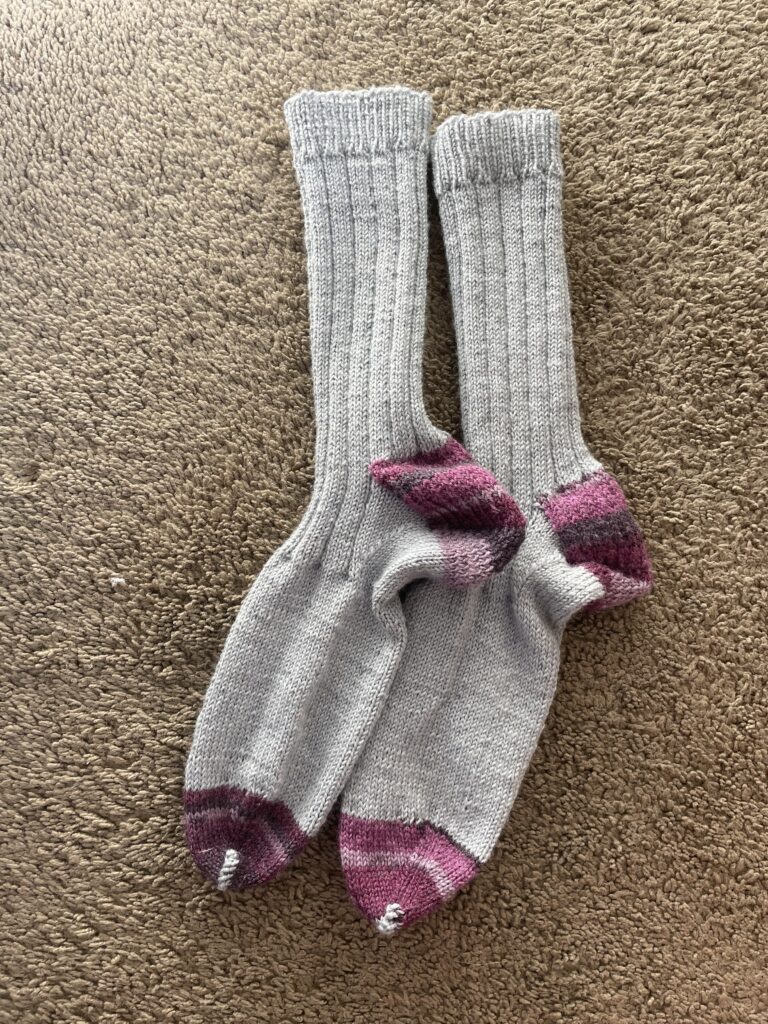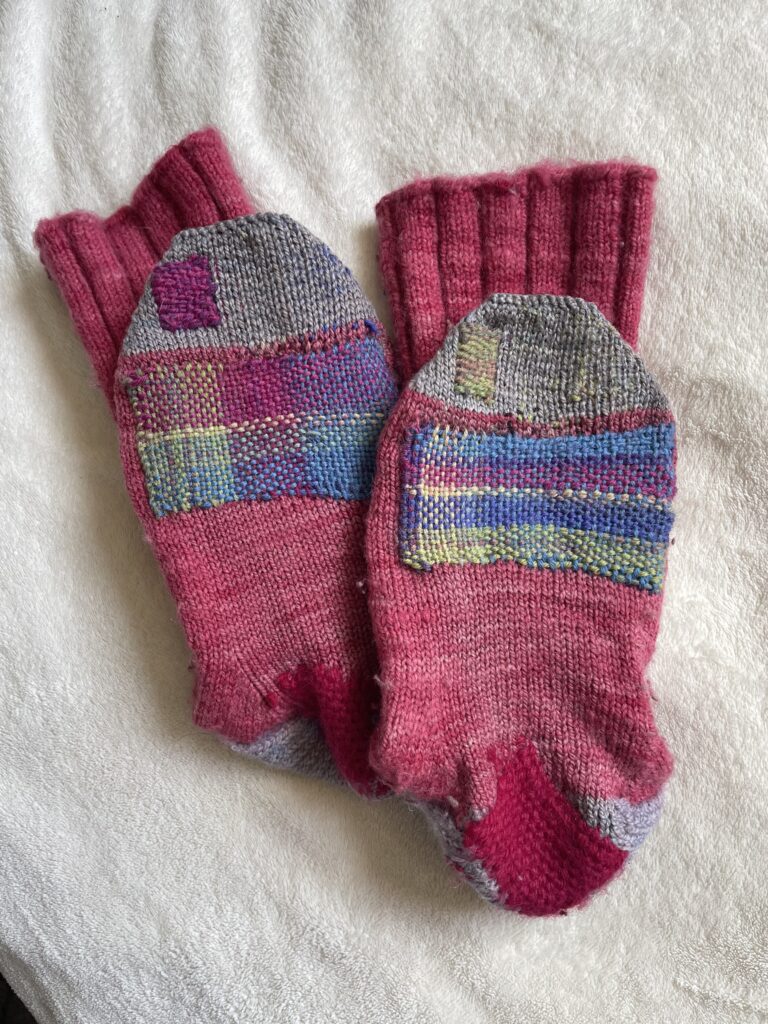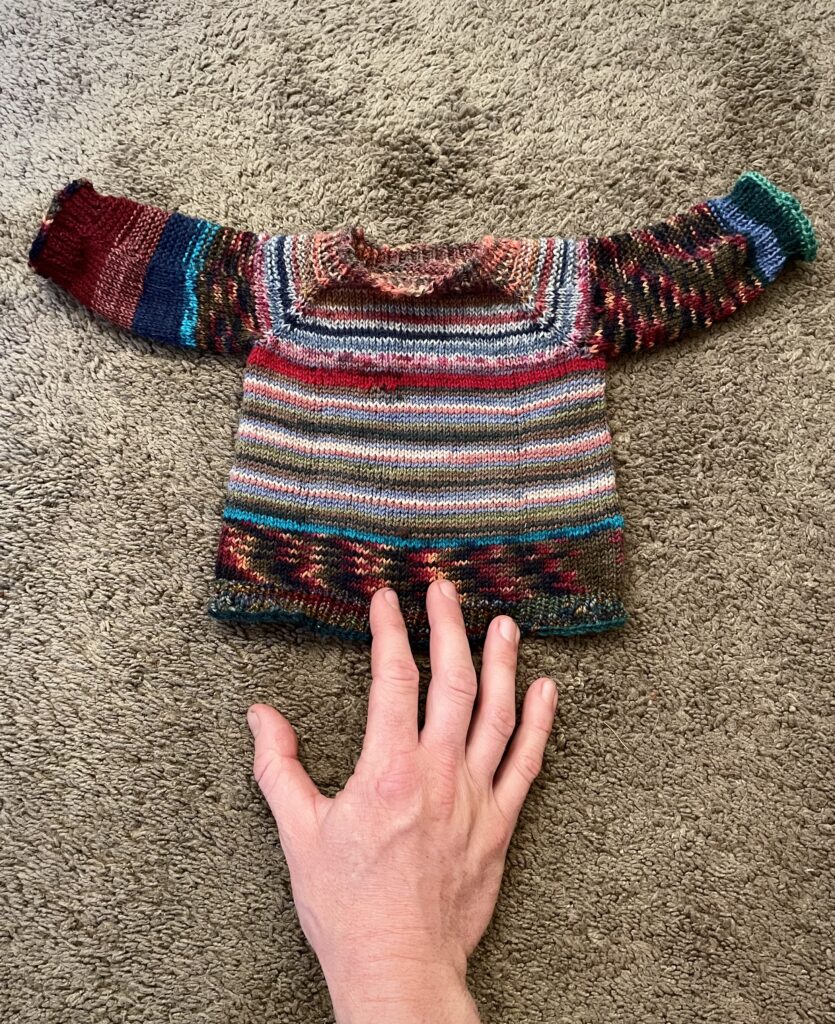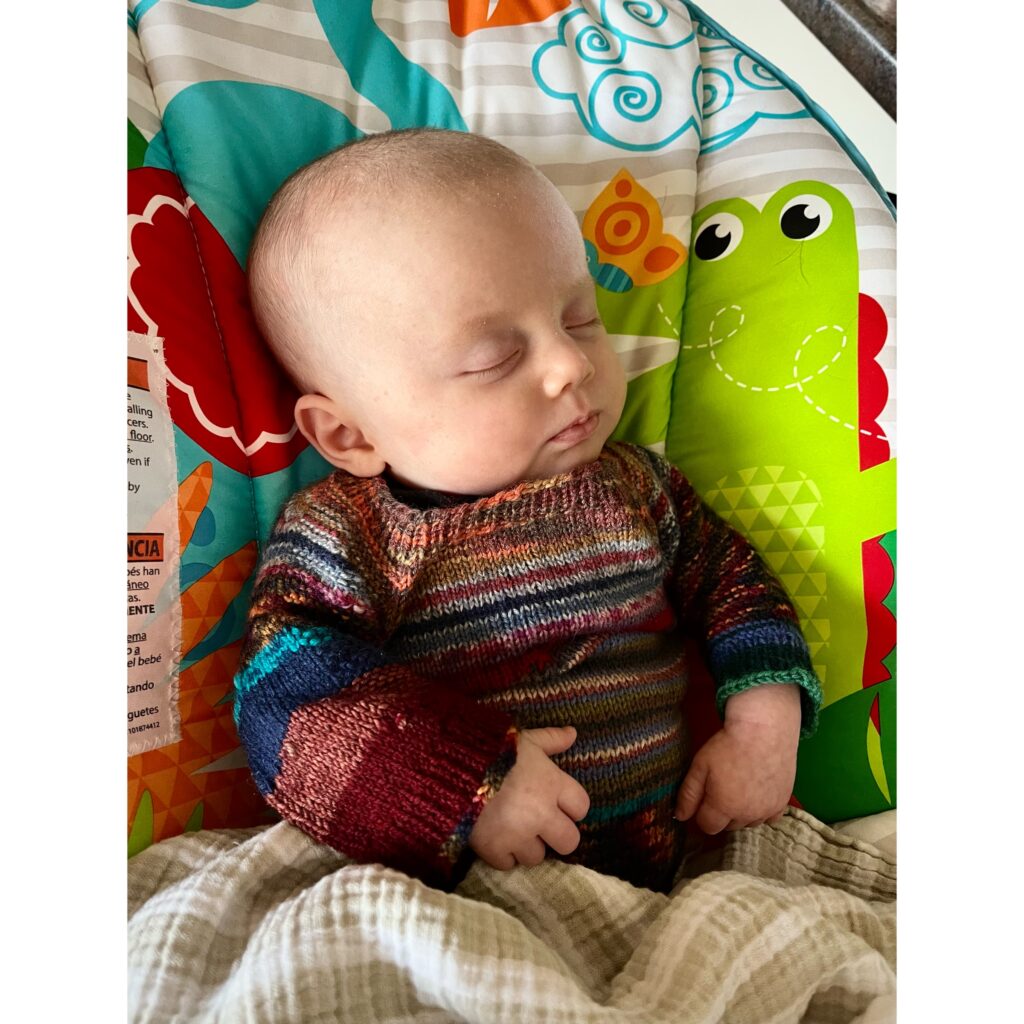There is no better material for the start of any project than the scraps of another and an already finished one. Whatever the art – fashion, architecture, cooking, writing – I thoroughly believe leftovers to be the highest and most desirable of source material. It’s not only because of the old saw about ‘one man’s trash…’ It’s that where others might see waste, I see opportunity. Oscar the Grouch was on to something.
But for something so precious, I also strive to avoid making more of it. And after more than a decade of knitting and – especially – a Christmas tradition of a new pair of socks for every family member, I had nearly a whole tub of golf ball sized bits of yarn in odd colors and lengths. None of these bits were ever enough by themselves to make an entire project, unless one was crafting fashion for dolls. And I only tended to use them in the heels and toes of new socks or, whenever knitwear wore thin, to go through the stash for some suitable colors to weave a patch or repair a few stitches.


This, though, is all quite trivial in impact and hardly makes much of a mark on the overall amount of stash. The tub continued to fill to near overflowing. I might agree with Oscar, but I also have only so much room in my home.
But then friends started pairing off and having babies. So I started putting the bits together into sweaters for infants. For one, it would be a creative way to use up scrap. For another, babies grow so quickly that it didn’t really matter if the colors didn’t match. And for a third, babies also spit up all the time, that the more varied the colors the more likely to hide the stain.
A friend suggested a free and simple pattern from Tin Can Knits. (While the pattern is for worsted weight, I used fingering weight yarn – the same weight as is used for socks – with some adjustment to measurement) This worked quite well that after making a practice sweater for a friend’s baby, I was soon making more.


But after the fifth or sixth baby, I started thinking that I might make a sweater in the same style but in an adult size. I’ve made sweaters for myself before. Occasionally even spent several hundred dollars just on buying enough wool for one. But there’s not really much reason for me to buy more yarn when I already have so much at hand. Not only would it save money, but it would save material. So why not do what I’ve already done, just larger?
I was oddly inspired by the work of German architect, Karl Bengs, who builds houses in Japan. Rather than start with blueprints, as most architects would, he begins by consulting the available materials from the demolition of other structures – beams, doors, etcetera – and then reinterprets the stuff in fresh ways. The results are unique. Identifiably of a style, and yet no two alike.
This approach is not so different from how I make aprons. And the spirit of inventive thrift is very much in accord with my business model: the avoidance of waste by the creation of art.
And so I’ve tried to remind myself, as Bengs seems to do naturally, to begin by consulting the materials already at hand. Which is to say, the scrap of the project before. I already know its weight, feel, and value. I made it myself. I can also figure out how to remake it. Do I know exactly what the end result will look like? No. But isn’t that part of the adventure.